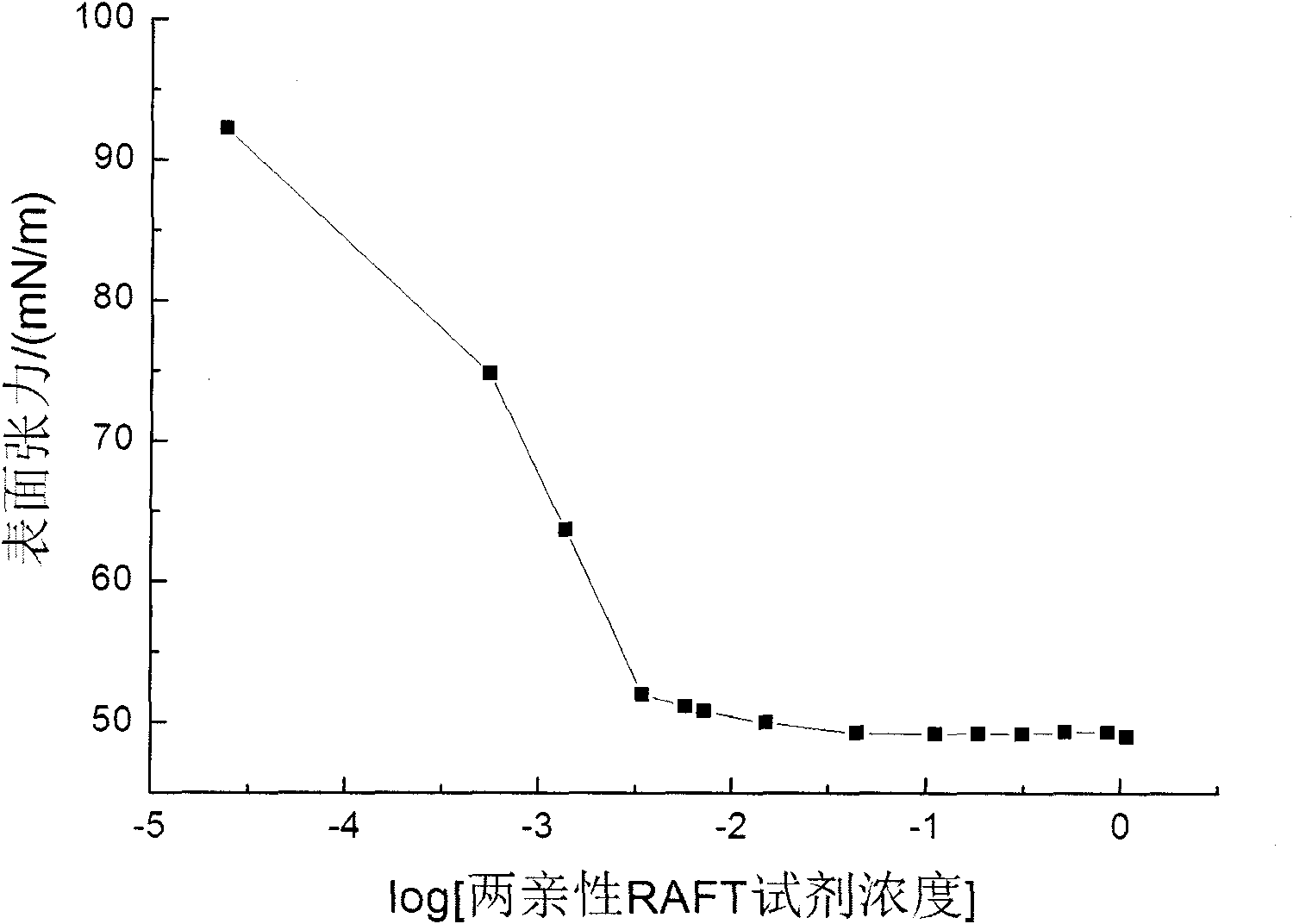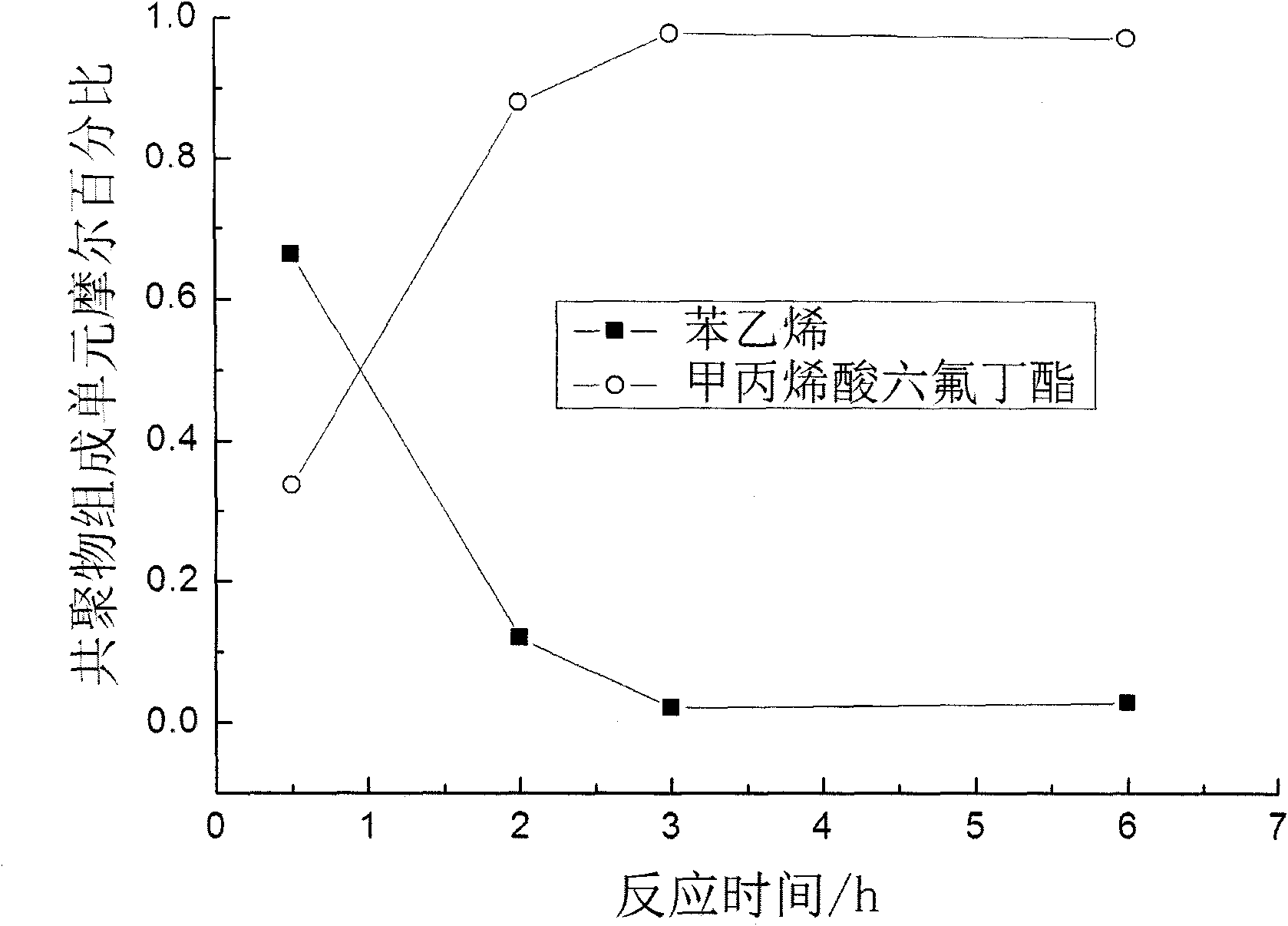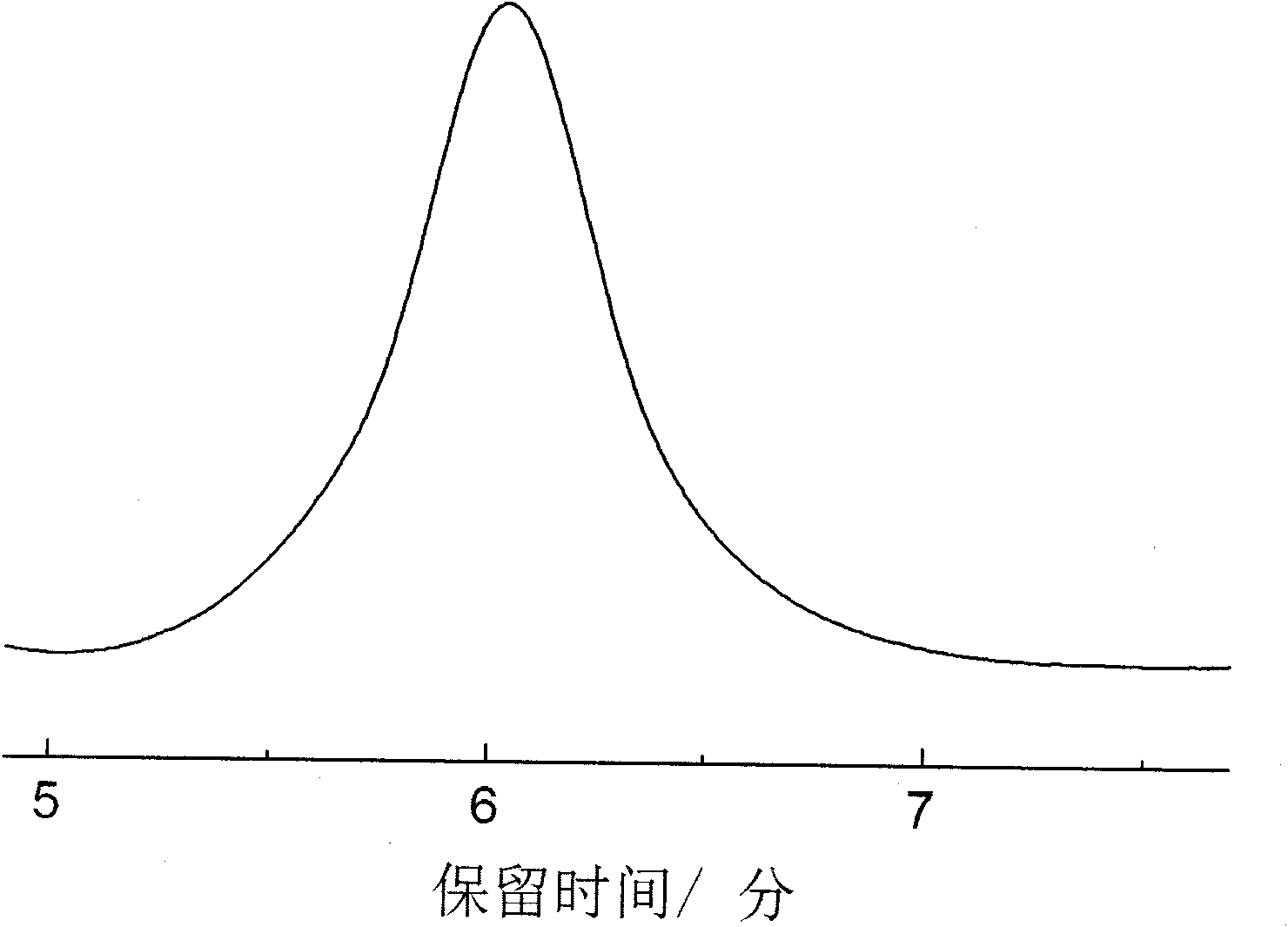Method for preparing gradient copolymer
A gradient copolymer and reactivity ratio technology, applied in the fields of polymer chemistry and emulsion polymerization, can solve the problems of wide particle size distribution, latex instability, and uncontrolled molecular weight distribution, and achieve narrow molecular weight distribution, controllable molecular weight, and reaction conditions. mild effect
- Summary
- Abstract
- Description
- Claims
- Application Information
AI Technical Summary
Problems solved by technology
Method used
Image
Examples
Embodiment 1
[0036] First disperse 5.0g dodecyl mercaptan and 0.54g tetrapropylammonium bromide in a mixed solvent consisting of 10ml water and 80ml acetone, and then add 1.0g sodium hydroxide and stir and heat to dissolve it. After room temperature, add 1.9g of carbon disulfide. After stirring for 30min, add 3.82g of dibromopropionic acid. Stir for more than 12 hours at room temperature and let it evaporate to 1 / 4 of its original volume. Then add hydrochloric acid (2M, 100mL) Slowly acidify, add 300mL of water to dilute, filter and wash to obtain the product, and finally recrystallize with petroleum ether and n-hexane to obtain the basic RAFT reagent S-1-dodecyl-S'-(α-methyl-α'-acetic acid) Trithiocarbonate. In the dry reactor, nitrogen gas was blown for 15 minutes and then S-1-dodecyl-S'-(α-methyl-α'-acetic acid) trithiocarbonate 1.75g, dioxane 8.98g and acrylic acid were added. 2.16g, V-501 initiator 0.14g, fully stirred to dissolve, start the water bath to heat up to 60℃, keep the reac...
Embodiment 2
[0039] In the dry reactor, nitrogen gas was added for 15 minutes, and then 47ml of water and 0.4692g S-1-dodecyl-S'-[(1,3,5,7,9,11,13-heptacarboxy)-fourteen Alkyl] trithiocarbonate (obtained according to the method of Example 1), after dissolving, add dropwise 2.6g of styrene, after fully pre-emulsification, add the initiator potassium persulfate (KPS) 0.0678g to dissolve, the water bath is heated to 70°C Begin to use a micro-injection pump to drop 5.9 g of hexafluorobutyl acrylate at a rate of 1.3 ml / h. After 6 hours of reaction, the system was cooled to room temperature and discharged. In the initial stage of the reaction, the polymerization rate is relatively slow. As the polymerization reaction time increases, the polymer conversion rate gradually increases. The obtained polymer emulsion has a pH value of 7, slightly yellow, no demulsification and layering phenomenon, and is still stable after being placed for 3 months. The conversion rate measured by the weight method is ...
Embodiment 3
[0041] Put nitrogen in the dry reactor for 15 minutes and then add 47ml of water and 0.0782g of S-1-dodecyl-S'-[(1,3,5,7,9,11,13-heptacarboxy)-14 Alkyl] trithiocarbonate (obtained according to the method of Example 1), after dissolving, add dropwise 2.6g of A monomer styrene, after fully pre-emulsification, add 0.0678g of the initiator potassium persulfate to dissolve, the water bath is heated to 70℃ Begin using a micro-injection pump to drop 5.9 g of B monomer hexafluorobutyl acrylate at a rate of 1.3 ml / h. After 6 hours of reaction, the system was cooled to room temperature and discharged. The obtained polymer emulsion has a pH value of 7, and it is milky white without demulsification and layering. It is still stable after 3 months. The conversion rate measured by the gravimetric method is 97.63%, the number average molecular weight of the product is 65503, and the molecular weight distribution is 1.36. image 3 It is a curve of the molecular weight and molecular weight dist...
PUM
| Property | Measurement | Unit |
|---|---|---|
| molecular weight distribution | aaaaa | aaaaa |
| molecular weight distribution | aaaaa | aaaaa |
| molecular weight distribution | aaaaa | aaaaa |
Abstract
Description
Claims
Application Information
 Login to View More
Login to View More - R&D
- Intellectual Property
- Life Sciences
- Materials
- Tech Scout
- Unparalleled Data Quality
- Higher Quality Content
- 60% Fewer Hallucinations
Browse by: Latest US Patents, China's latest patents, Technical Efficacy Thesaurus, Application Domain, Technology Topic, Popular Technical Reports.
© 2025 PatSnap. All rights reserved.Legal|Privacy policy|Modern Slavery Act Transparency Statement|Sitemap|About US| Contact US: help@patsnap.com



